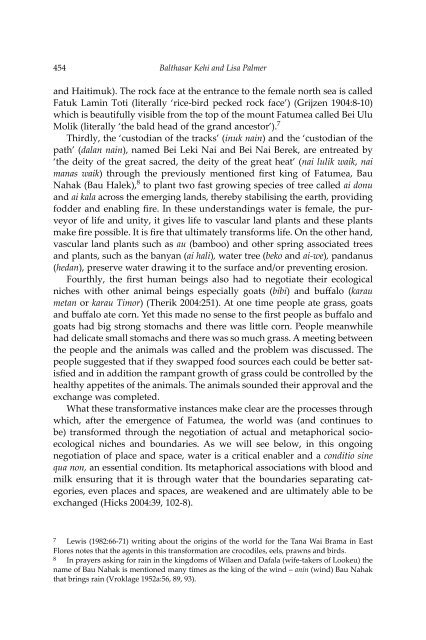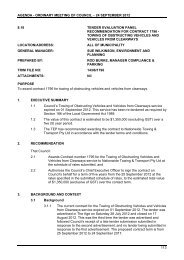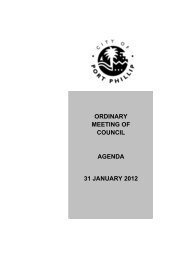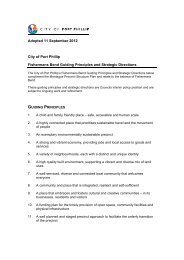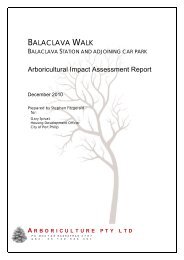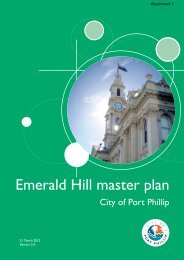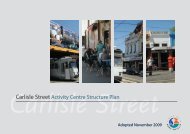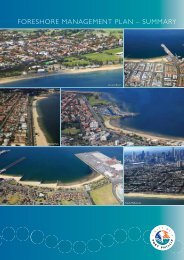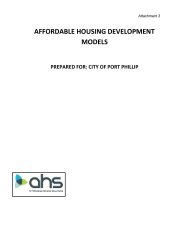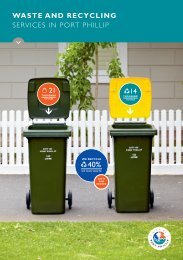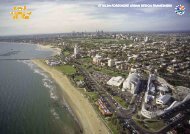You also want an ePaper? Increase the reach of your titles
YUMPU automatically turns print PDFs into web optimized ePapers that Google loves.
454<br />
Balthasar <strong>Kehi</strong> <strong>and</strong> Lisa <strong>Palmer</strong><br />
<strong>and</strong> Haitimuk). The rock face at the entrance to the female north sea is called<br />
Fatuk Lamin Toti (literally ‘rice-bird pecked rock face’) (Grijzen 1904:8-10)<br />
which is beautifully visible from the top <strong>of</strong> the mount Fatumea called Bei Ulu<br />
Molik (literally ‘the bald head <strong>of</strong> the gr<strong>and</strong> ancestor’). 7<br />
Thirdly, the ‘custodian <strong>of</strong> the tracks’ (inuk nain) <strong>and</strong> the ‘custodian <strong>of</strong> the<br />
path’ (dalan nain), named Bei Leki Nai <strong>and</strong> Bei Nai Berek, are entreated by<br />
‘the deity <strong>of</strong> the great sacred, the deity <strong>of</strong> the great heat’ (nai lulik waik, nai<br />
manas waik) through the previously mentioned first king <strong>of</strong> Fatumea, Bau<br />
Nahak (Bau Halek), 8 to plant two fast growing species <strong>of</strong> tree called ai donu<br />
<strong>and</strong> ai kala across the emerging l<strong>and</strong>s, thereby stabilising the earth, providing<br />
fodder <strong>and</strong> enabling fire. In these underst<strong>and</strong>ings water is female, the purveyor<br />
<strong>of</strong> life <strong>and</strong> unity, it gives life to vascular l<strong>and</strong> plants <strong>and</strong> these plants<br />
make fire possible. It is fire that ultimately transforms life. On the other h<strong>and</strong>,<br />
vascular l<strong>and</strong> plants such as au (bamboo) <strong>and</strong> other spring associated trees<br />
<strong>and</strong> plants, such as the banyan (ai hali), water tree (beko <strong>and</strong> ai-we), p<strong>and</strong>anus<br />
(hedan), preserve water drawing it to the surface <strong>and</strong>/or preventing erosion.<br />
Fourthly, the first human beings also had to negotiate their ecological<br />
niches with other animal beings especially goats (bibi) <strong>and</strong> buffalo (karau<br />
metan or karau Timor) (Therik 2004:251). At one time people ate grass, goats<br />
<strong>and</strong> buffalo ate corn. Yet this made no sense to the first people as buffalo <strong>and</strong><br />
goats had big strong stomachs <strong>and</strong> there was little corn. People meanwhile<br />
had delicate small stomachs <strong>and</strong> there was so much grass. A meeting between<br />
the people <strong>and</strong> the animals was called <strong>and</strong> the problem was discussed. The<br />
people suggested that if they swapped food sources each could be better satisfied<br />
<strong>and</strong> in addition the rampant growth <strong>of</strong> grass could be controlled by the<br />
healthy appetites <strong>of</strong> the animals. The animals sounded their approval <strong>and</strong> the<br />
exchange was completed.<br />
What these transformative instances make clear are the processes through<br />
which, after the emergence <strong>of</strong> Fatumea, the world was (<strong>and</strong> continues to<br />
be) transformed through the negotiation <strong>of</strong> actual <strong>and</strong> metaphorical socioecological<br />
niches <strong>and</strong> boundaries. As we will see below, in this ongoing<br />
negotiation <strong>of</strong> place <strong>and</strong> space, water is a critical enabler <strong>and</strong> a conditio sine<br />
qua non, an essential condition. Its metaphorical associations with blood <strong>and</strong><br />
milk ensuring that it is through water that the boundaries separating categories,<br />
even places <strong>and</strong> spaces, are weakened <strong>and</strong> are ultimately able to be<br />
exchanged (Hicks 2004:39, 102-8).<br />
7 Lewis (1982:66-71) writing about the origins <strong>of</strong> the world for the Tana Wai Brama in East<br />
Flores notes that the agents in this transformation are crocodiles, eels, prawns <strong>and</strong> birds.<br />
8 In prayers asking for rain in the kingdoms <strong>of</strong> Wilaen <strong>and</strong> Dafala (wife-takers <strong>of</strong> Lookeu) the<br />
name <strong>of</strong> Bau Nahak is mentioned many times as the king <strong>of</strong> the wind ‒ anin (wind) Bau Nahak<br />
that brings rain (Vroklage 1952a:56, 89, 93).


